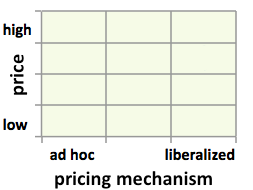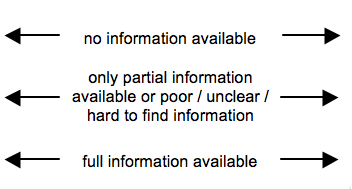Knowledge fuels change
For over a decade, Energypedia has shared free, reliable energy expertise with the world.
We’re now facing a serious funding gap.
Help keep this platform alive — your donation, big or small, truly matters!
Thank you for your support
Difference between revisions of "Fuel Prices Philippines"
***** (***** | *****) m (Protected "Fuel Prices Philippines" ([edit=sysop] (indefinite) [move=sysop] (indefinite)) [cascading]) |
***** (***** | *****) |
||
| Line 1: | Line 1: | ||
{{Fuel Price Factsheet | {{Fuel Price Factsheet | ||
|Fuel Price Country=Philippines | |Fuel Price Country=Philippines | ||
| + | |Fuel Pricing Policies=The downstream fuel market in the Philippines is open and the pricing is liberal. There are about ten major retailing companies. | ||
| + | |||
| + | The Philippine Department of Energy (DoE) monitors fuel prices. DoE publishes information on fuel price composition, up-to-date fuel prices (~every two weeks) and historical fuel price data. Prices are shown for three major areas of the country. Since deregulation of the market in the early 2000s, the DoE gives easy-to-understand information to customers on landed cost of bringing in finished oil products, in order to strengthen the market forces on oil companies. | ||
| + | |||
| + | "The downstream petroleum sector was deregulated in 1998, although government has negotiated voluntary diesel price discounts with oil companies for transport operators. Import tariffs on crude oil and refined products were reduced from 3% to 0% in May 2010. In Feb 2009, Department Energy asked oil companies to explain in writing within 48 hours the justification for price increases, and added that it was checking the dates of the acquisition of the supply, the volume, the value, and the shipment date. On Oct 23, 2009, government imposed price ceilings in response to adverse weather events, forcing oil companies to lower prices back to the Oct 15 level. This led to early closure of some filling stations. The ceilings were lifted on Nov 16, on condition that the oil companies agree to implement discounts and stagger future price increases. Under the label “jump-starting” strategic reserves, the president ordered Philippine National Oil Company-Exploration Corporation, which is 99.8% owned by government, to sell diesel at ₱2–3 (US$0.05–0.07) a liter below the market level starting in Jul 2011. Department of Energy monitors both wholesale and retail prices, and posts current and historical data on its Web site." (Source: Kojima, Masami. (2013, forthcoming). “Petroleum product pricing and complementary policies:Experience of 65 developing countries since 2009.” Washington DC: World Bank.) | ||
|Fuel Currency=PHP | |Fuel Currency=PHP | ||
|Fuel Price Exchange Rate=43.568 | |Fuel Price Exchange Rate=43.568 | ||
|Fuel Price Exchange Rate Date=2012/11/17 | |Fuel Price Exchange Rate Date=2012/11/17 | ||
| − | |||
|Fuel Price Composition=GIZ IFP2012 Philippines.png | |Fuel Price Composition=GIZ IFP2012 Philippines.png | ||
|Fuel Price Composition Fuel Type=Gasoline 95 Octane | |Fuel Price Composition Fuel Type=Gasoline 95 Octane | ||
| Line 16: | Line 20: | ||
Source: own calculation based on http://www.doe.gov.ph/OPM/Pricing%20Formula.htm | Source: own calculation based on http://www.doe.gov.ph/OPM/Pricing%20Formula.htm | ||
| − | |Fuel Pricing | + | |Fuel Matrix Pricing Mechanism=3 |
| − | |||
| − | |||
|Fuel Matrix Price Level=2.5 | |Fuel Matrix Price Level=2.5 | ||
| − | |||
|Fuel Transparency Price Composition=3 | |Fuel Transparency Price Composition=3 | ||
|Fuel Transparency Pricing Mechanism=3 | |Fuel Transparency Pricing Mechanism=3 | ||
Revision as of 15:44, 13 February 2013
Part of: GIZ International Fuel Price database
Also see: Philippines Energy Situation
Fuel Pricing Policies
| Local Currency: | PHP |
| Exchange Rate: | 43.568
|
| Last Update: |
The downstream fuel market in the Philippines is open and the pricing is liberal. There are about ten major retailing companies.
The Philippine Department of Energy (DoE) monitors fuel prices. DoE publishes information on fuel price composition, up-to-date fuel prices (~every two weeks) and historical fuel price data. Prices are shown for three major areas of the country. Since deregulation of the market in the early 2000s, the DoE gives easy-to-understand information to customers on landed cost of bringing in finished oil products, in order to strengthen the market forces on oil companies.
"The downstream petroleum sector was deregulated in 1998, although government has negotiated voluntary diesel price discounts with oil companies for transport operators. Import tariffs on crude oil and refined products were reduced from 3% to 0% in May 2010. In Feb 2009, Department Energy asked oil companies to explain in writing within 48 hours the justification for price increases, and added that it was checking the dates of the acquisition of the supply, the volume, the value, and the shipment date. On Oct 23, 2009, government imposed price ceilings in response to adverse weather events, forcing oil companies to lower prices back to the Oct 15 level. This led to early closure of some filling stations. The ceilings were lifted on Nov 16, on condition that the oil companies agree to implement discounts and stagger future price increases. Under the label “jump-starting” strategic reserves, the president ordered Philippine National Oil Company-Exploration Corporation, which is 99.8% owned by government, to sell diesel at ₱2–3 (US$0.05–0.07) a liter below the market level starting in Jul 2011. Department of Energy monitors both wholesale and retail prices, and posts current and historical data on its Web site." (Source: Kojima, Masami. (2013, forthcoming). “Petroleum product pricing and complementary policies:Experience of 65 developing countries since 2009.” Washington DC: World Bank.)
Fuel Prices and Trends
| Gasoline 95 Octane | Diesel | |
|---|---|---|
| in USD* |
|
|
| in Local Currency |
|
|
* benchmark lines: green=US price; grey=price in Spain; red=price of Crude Oil
Fuel Price Composition
Price composition for one litre of Gasoline 95 Octane as of 2011/04/20 in Manila.

(*Singapore spot market price for 95 octance gasoline)
Operator costs include seaside shipping, inland transportation, storage, service station costs, etc.
VAT is the only tax on fuels as of May 2011.
Source: own calculation based on http://www.doe.gov.ph/OPM/Pricing%20Formula.htm
At a Glance
| Regulation-Price-Matrix |
| ||||
 |

|

|

| ||
Sources to the Public
| Type of Information | Web-Link / Source |
|---|---|
| Other Information | http://www.doe.gov.ph/ |
| Price Composition | http://www.doe.gov.ph/ |
| Pricing Mechanism | http://www.doe.gov.ph/ |
| Pump prices and margins | http://www.doe.gov.ph/OPM/Pumpprices.htm |
| Wholesale Prices | http://www.doe.gov.ph/ |
Contact
Please find more information on GIZ International Fuel Price Database and http://www.giz.de/fuelprices
The following coordinate was not recognized: {{#geocode: Philippines|google }}.



















